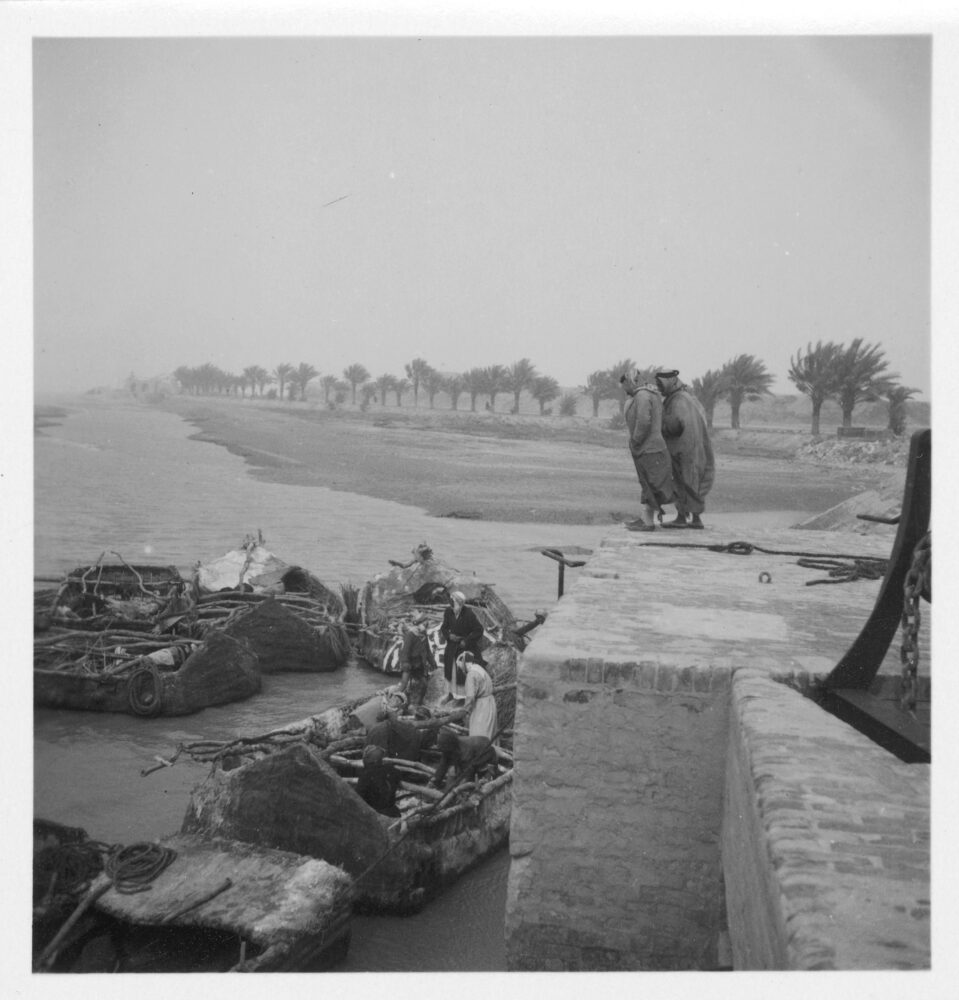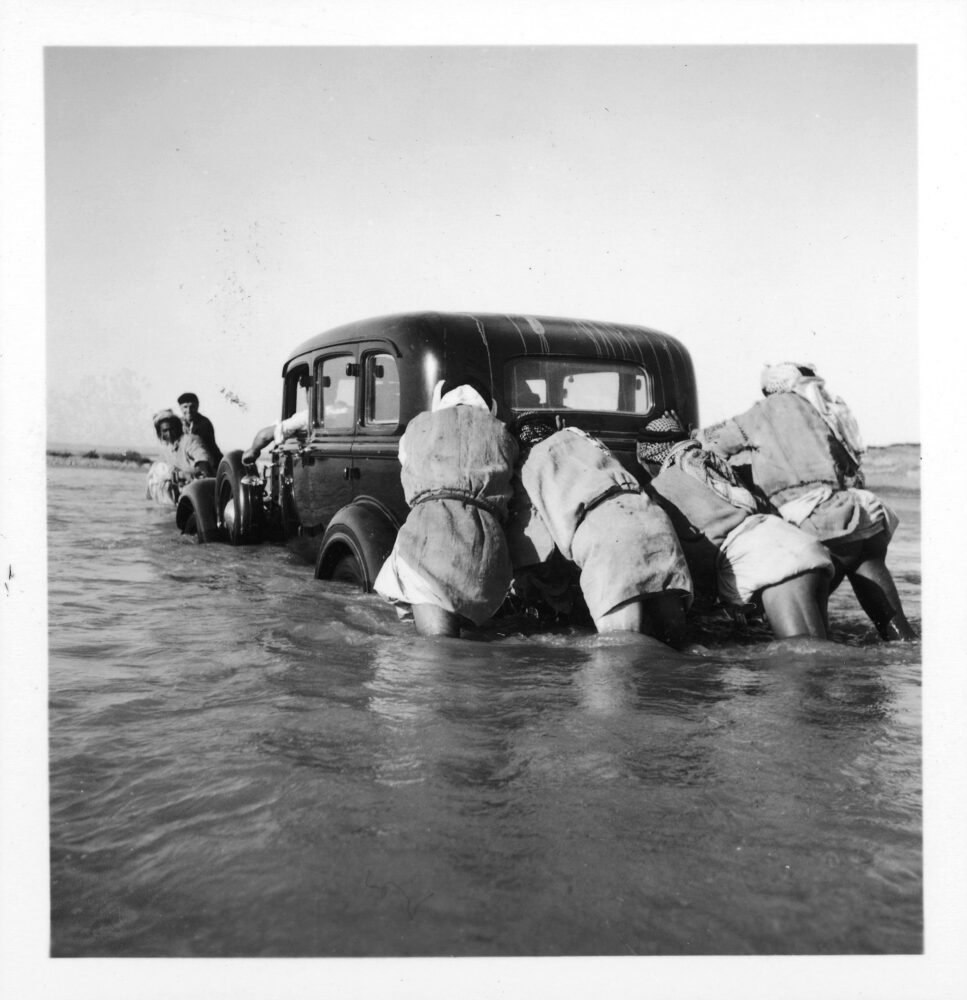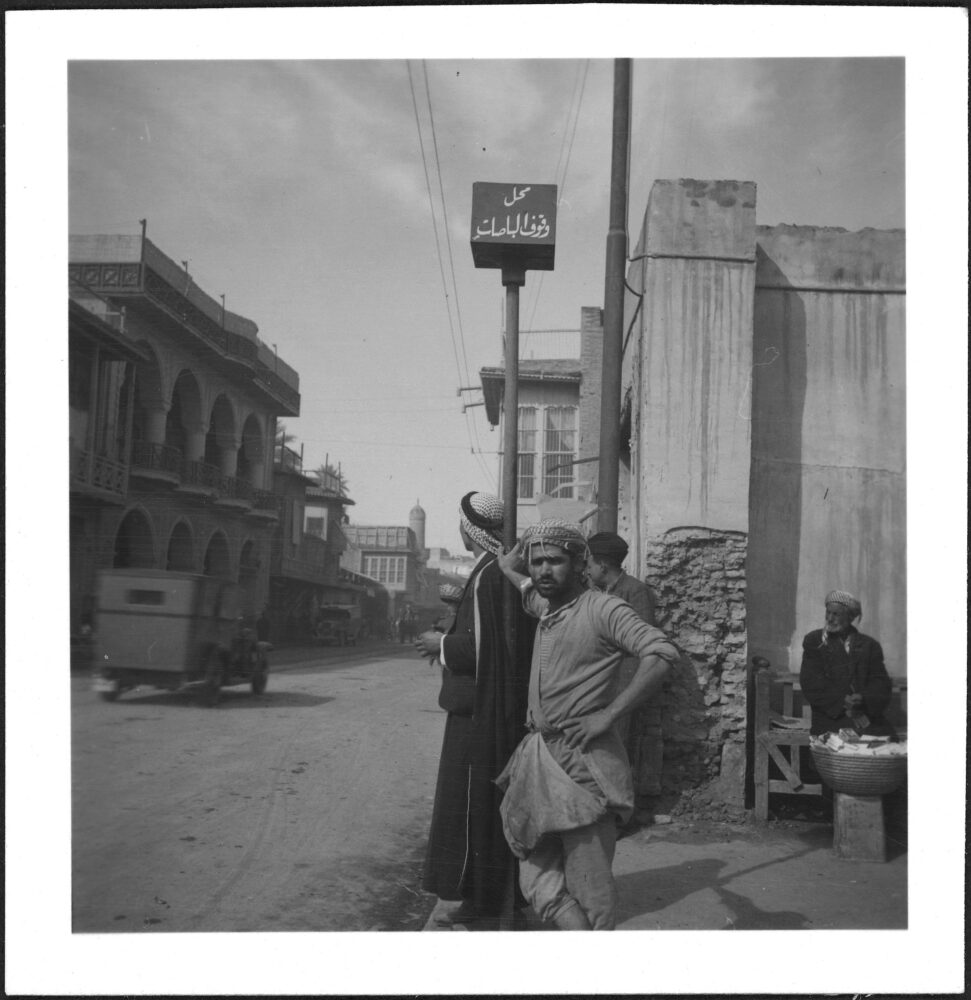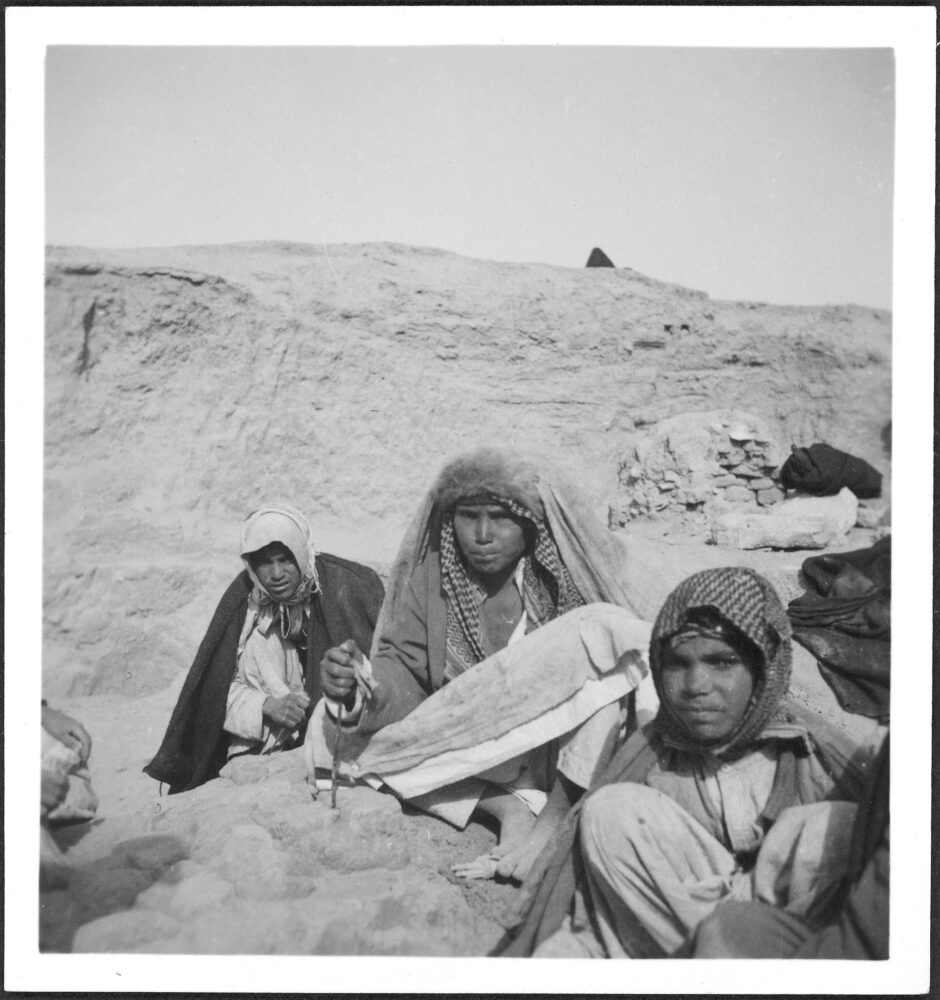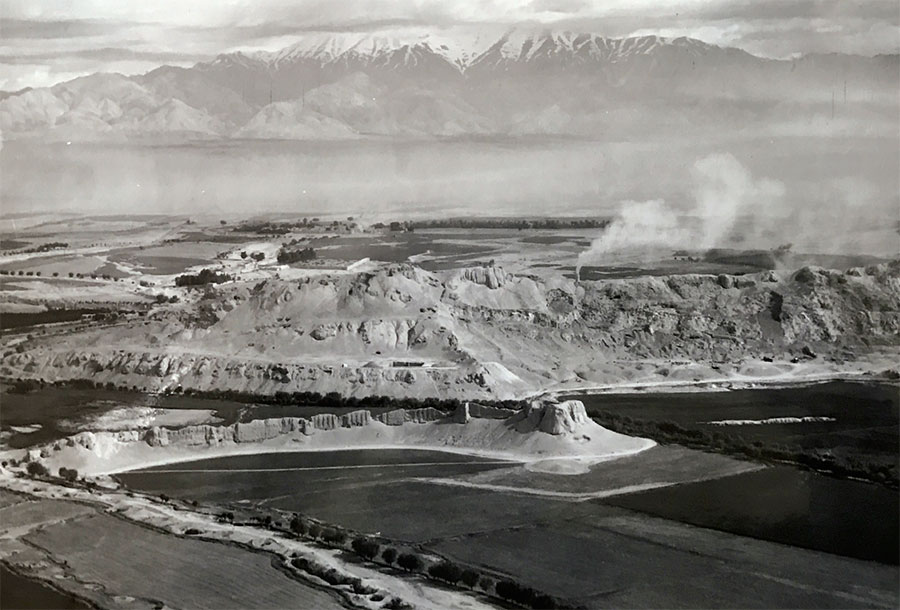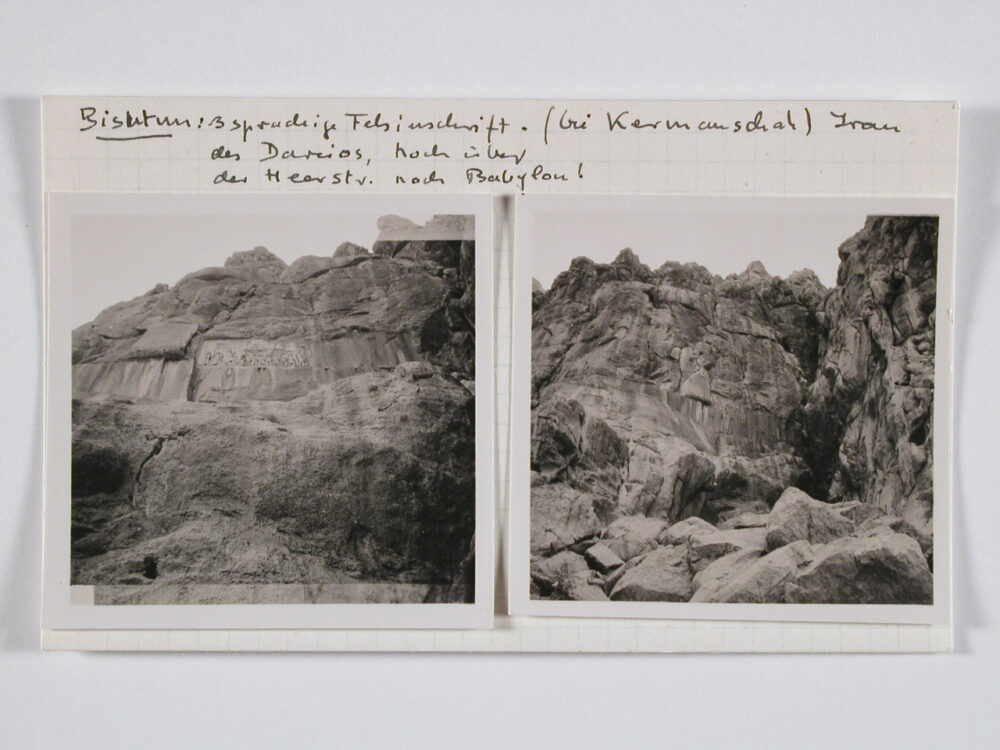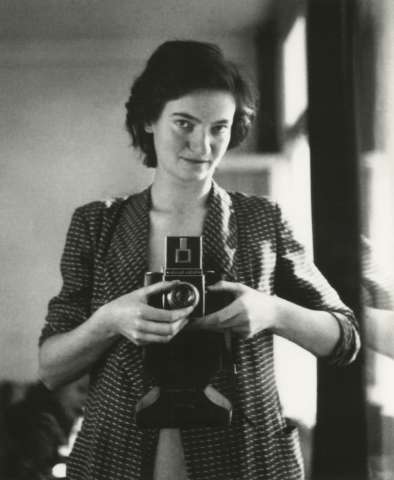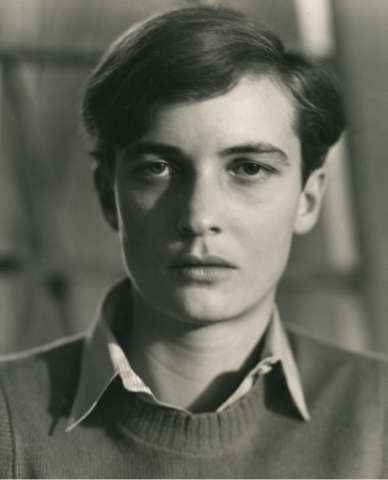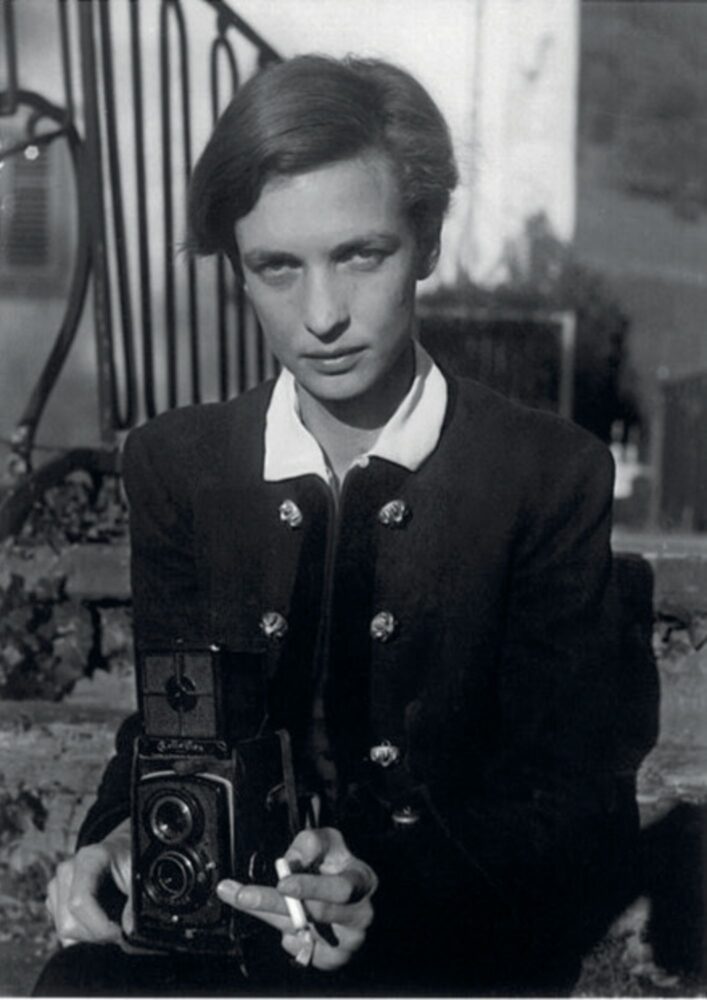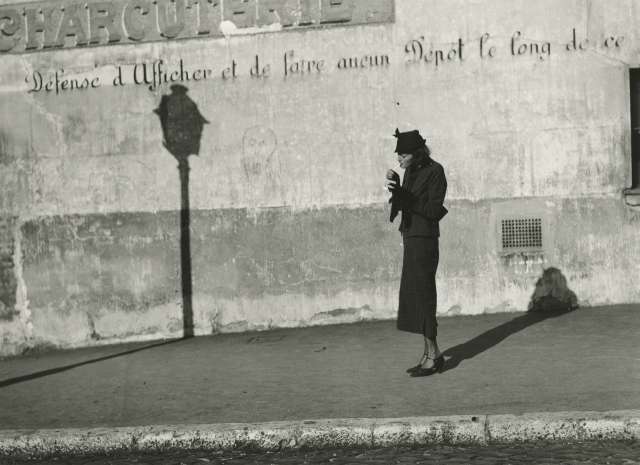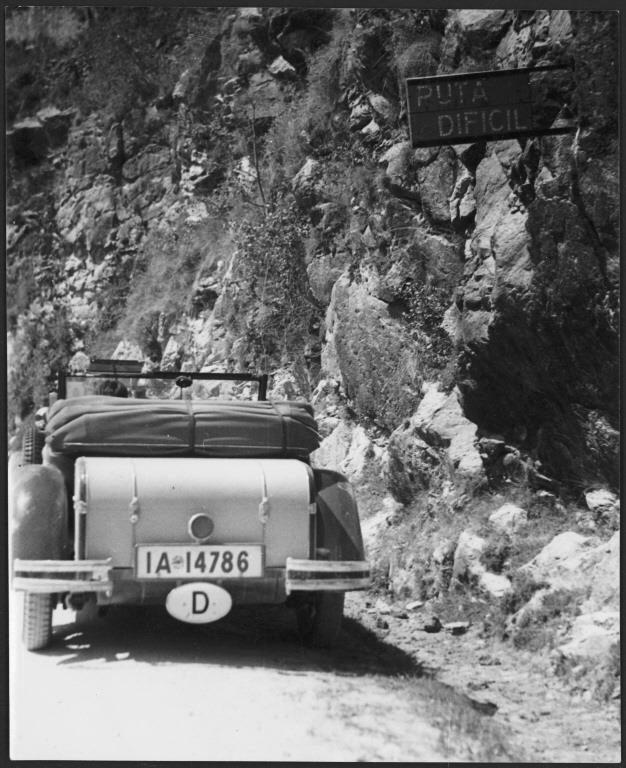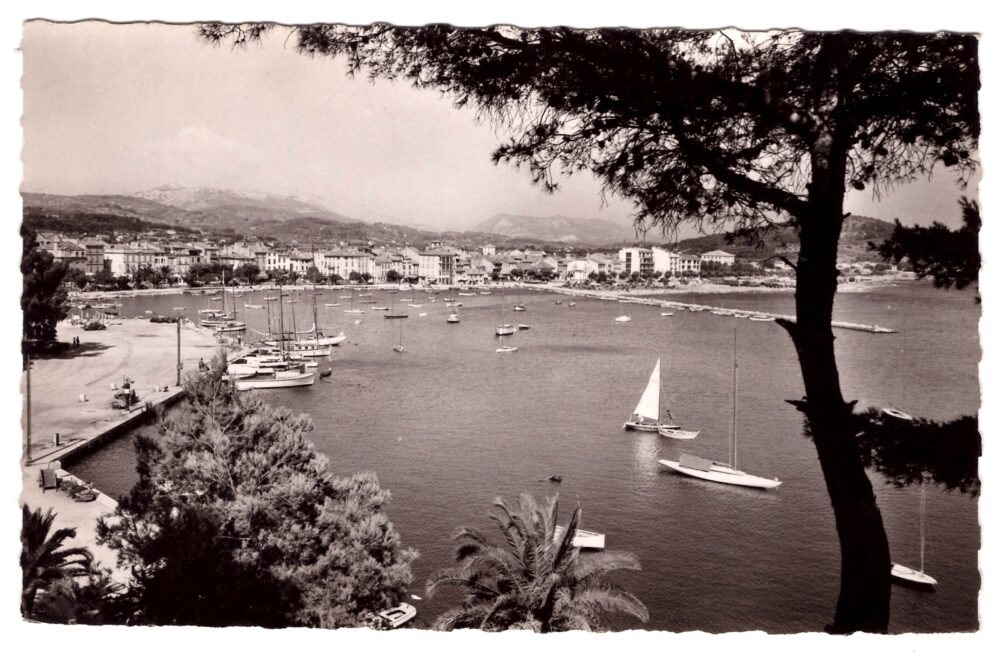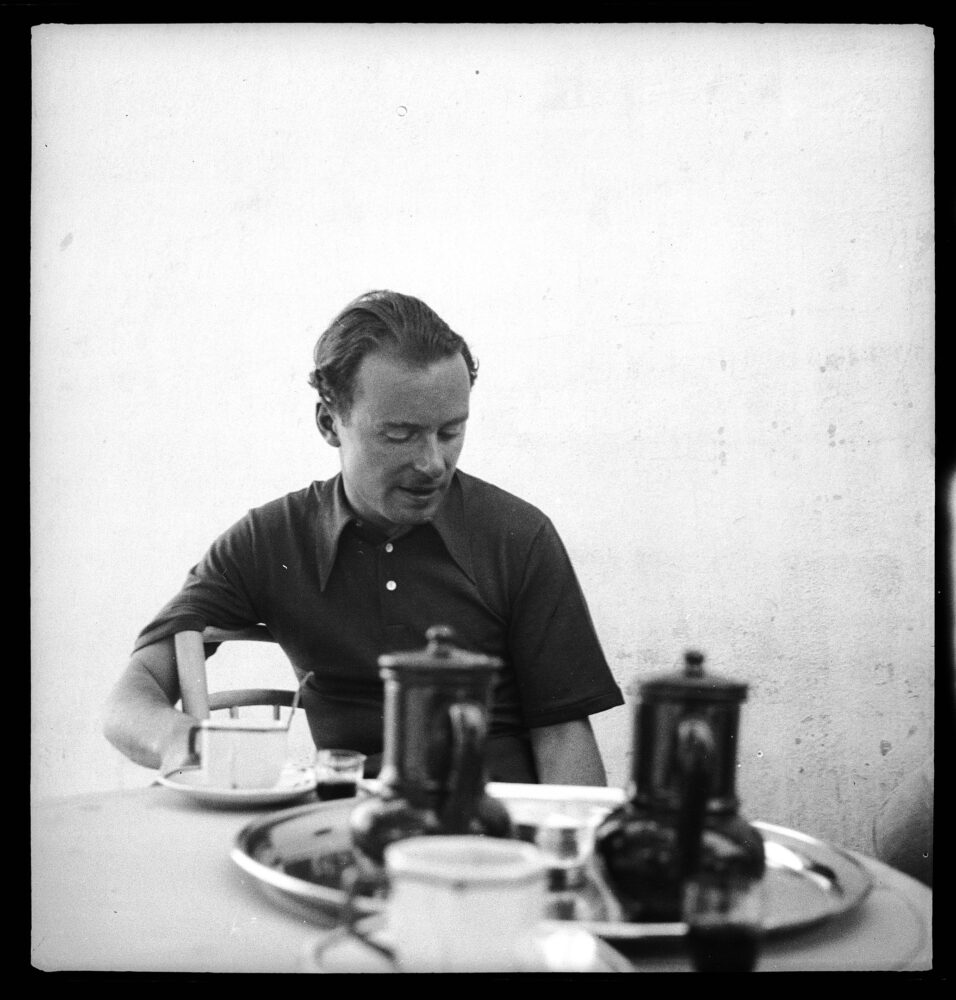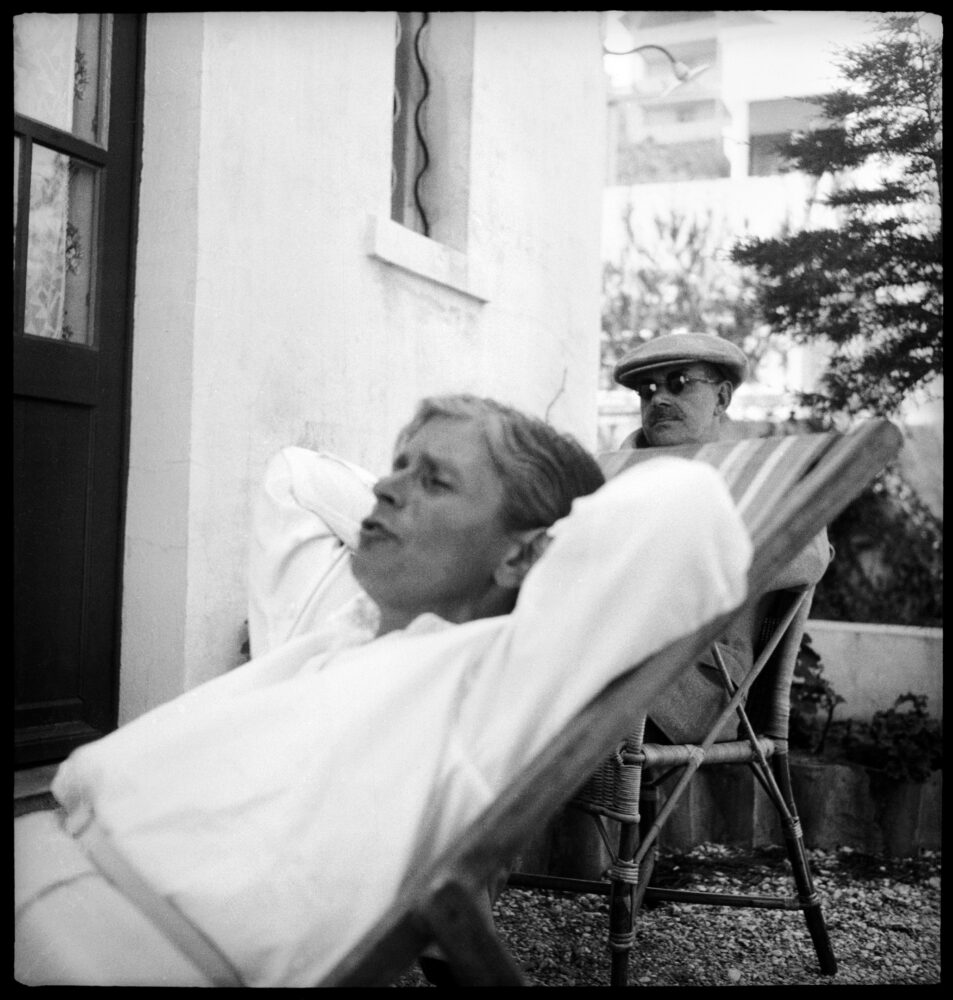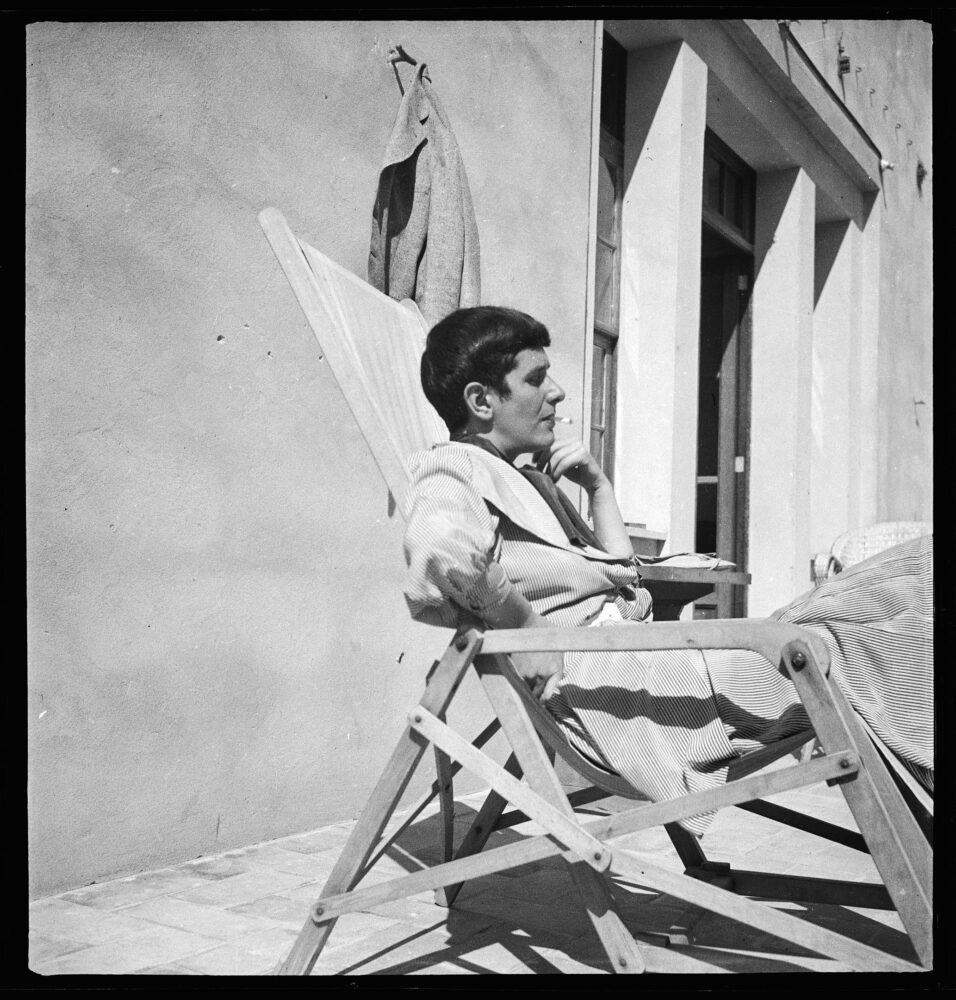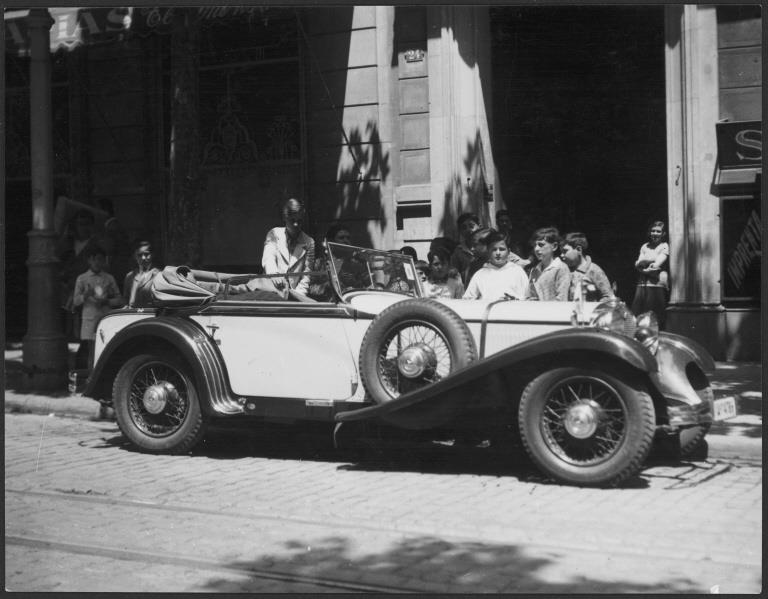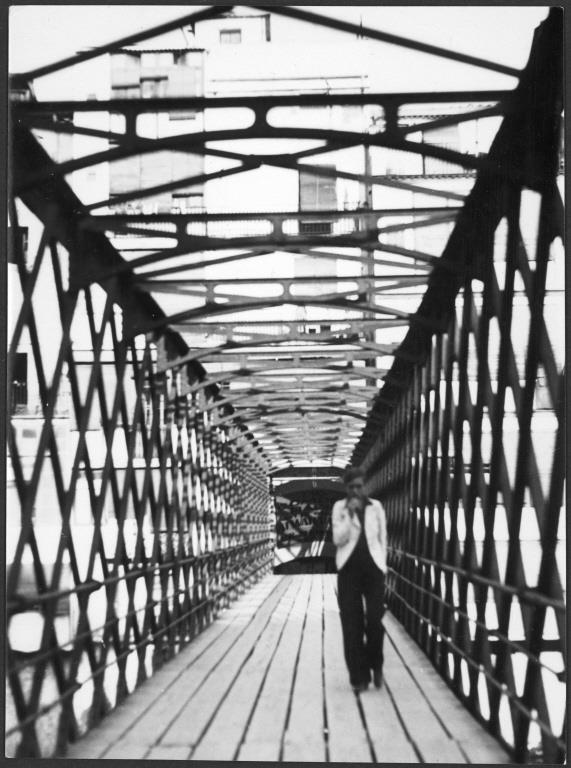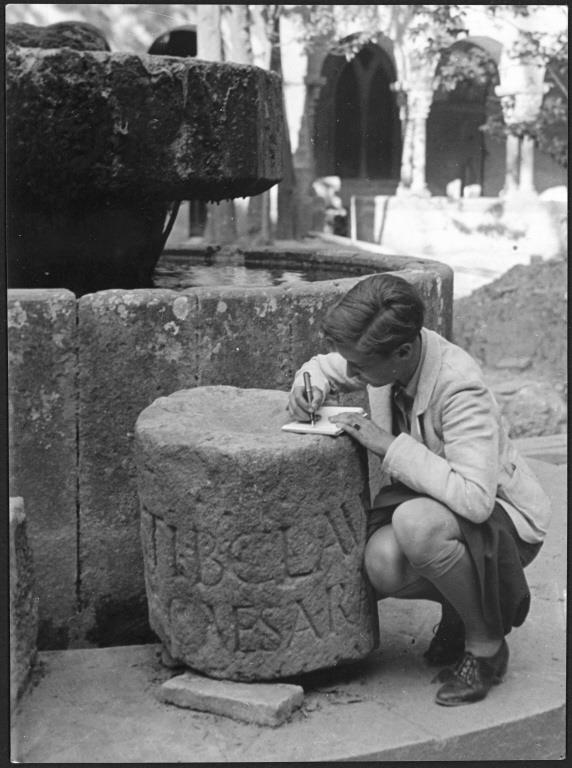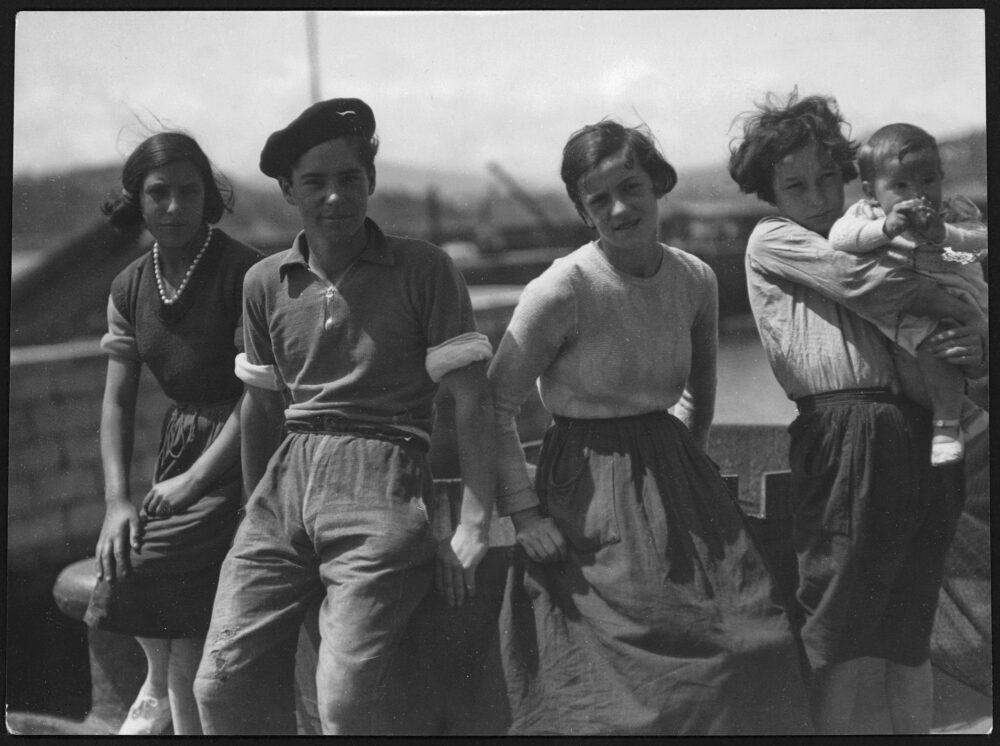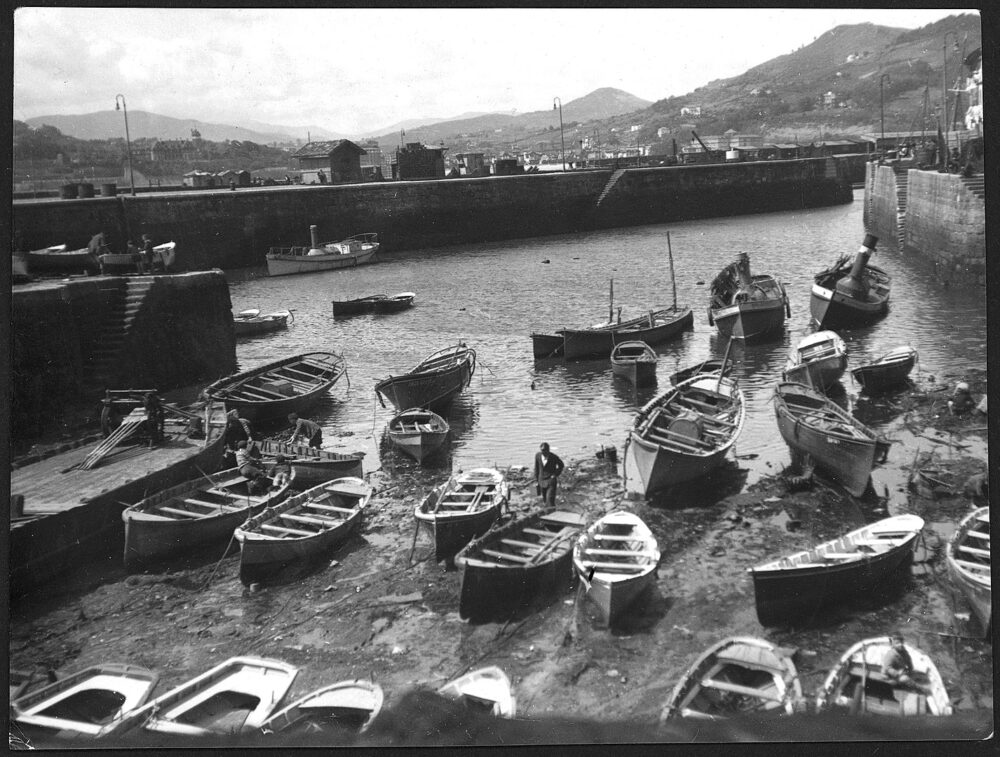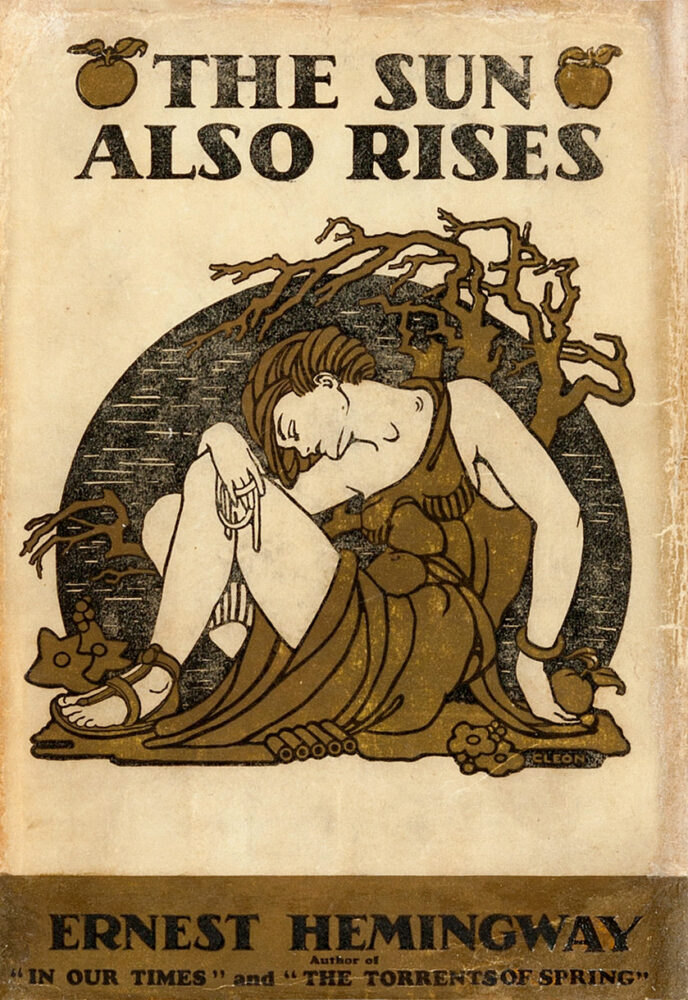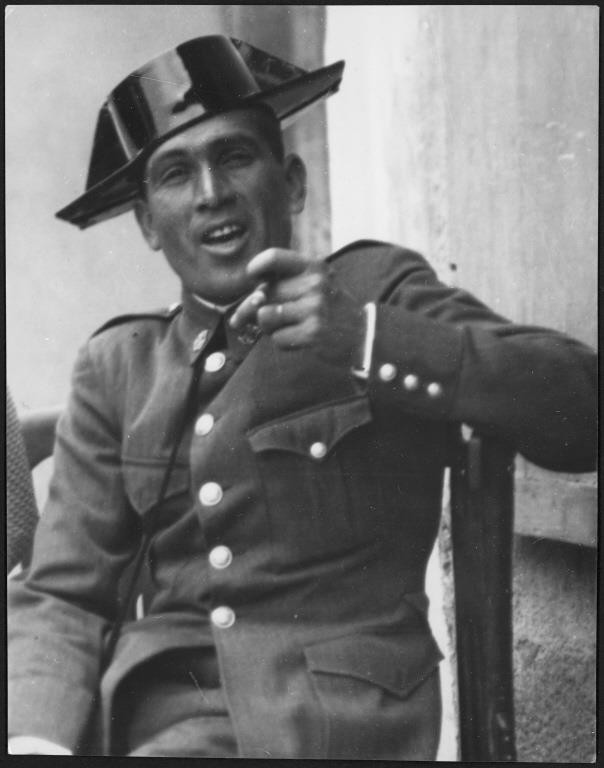Between 1933 and 1935, Swiss writer, photographer and traveller Annemarie Schwarzenbach visited Persia and the Middle East a total of three times. Her first tour of the region lasted seven months, and she had arranged to write and photograph for Swiss newspapers and magazines. She travelled to Istanbul on the Orient Express, taking in Anatolia, Syria, Lebanon, Palestine and Persia – before returning overland via Georgia and the southern Soviet Union to Prague. She was interested in archaeology, and had boned up on the major sites, the succession of cultures going back millennia, and had arranged to join a group of archaeologists in what was then the French mandate in Syria. From these oriental journeys emerged a travel diary, Winter in Vorderasien (Winter in the Middle East), a book of short stories, Bei diesem Regen, (In This Rain) a novel-travelogue Tod in Persien (Death in Persia), countless pieces of journalism and a husband. Several years later, she motored overland to Afghanistan with Ella Maillart at the beginning of the Second World War. Travel corresponded to a need and produced a varied and colourful body of reportage and semi-autobiographical fiction. Way led onto way; it was clear that Annemarie had found both a lifestyle and a subject for her writing.
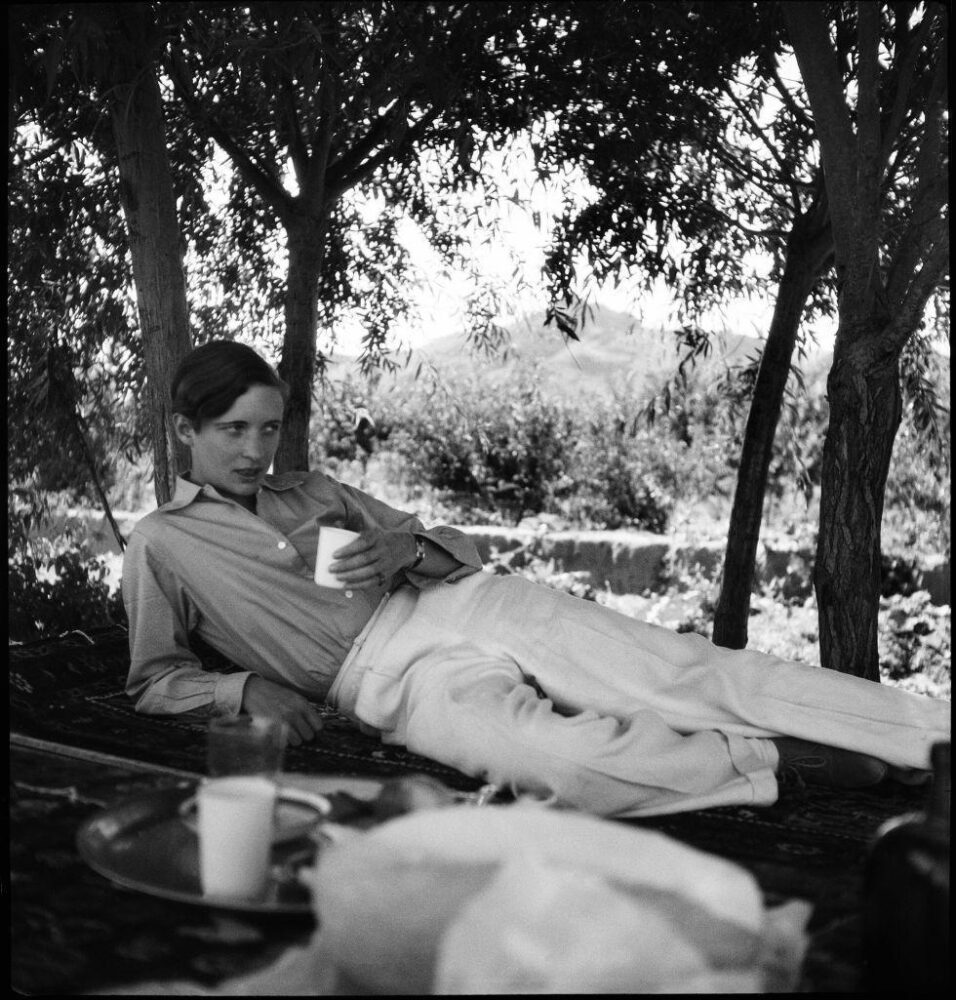
Annemarie Schwarzenbach photographed by Marianne Breslauer © Photo: Fotostiftung Schweiz, Winterthur, © Marianne Breslauer / Fotostiftung Schweiz
On 12 October 1933, with a certain grand explorer aplomb, she settled into the first class carriage of the Oriental Express leaving Geneva:
“When I was a child I was enraptured by the sight of the Orient Express making its way through the Valais and up to the Simplon Pass: all you had to do was climb aboard and, unhindered, wake up one morning on the Bosphorus, on the shore of Asia.”
What’s interesting about Annemarie’s travels is the way she practises selective disclosure – what the English call reserve. This is due, perhaps, to the habits of the closet, but is also her characteristic way of framing the world. Her old university chum Fred Pasternek accompanied her on the journey as far as Beirut, but nowhere does he really appear in the record, and she took no photographs of him – in fact she had no selfies taken at all. This creates the impression of her as the intrepid traveller whereas she was supported all the way by embassies, grand hotels, cars and drivers and a cohort of people, including Fred. There was always lashings of hot water back at the residency or the palace.

Children in Istanbul, 1933. Photo by Annemarie Schwarzenbach. Swiss Literary Archives, Bern
Her first stop was Istanbul and the Pera Palace Hotel perched on the Asian side. As always, Annemarie landed on her feet, knew the diplomats and archaeologists of several countries, where to go horseriding and the best colonial libraries. She had arranged to meet Jean Pozzi, permanent counsellor and former ambassador to the French embassy. Pozzi,had been attached to the French diplomatic mission since 1907 and was a collector of Byzantine and Islamic antiquities, many now in the Louvre and the Sèvres Museum. Istanbul was undergoing a building boom and canny collectors often had to be one step behind the construction companies. Competing American universities, French institutes, British spies doubling as archaeologists and explorers, and well-heeled widows were involved in the Oriental Expedition business – ever since the spectacular discovery of Tutenkhamun’s tomb in 1922. Pozzi was the perfect contact for a young person wanting to explore the archaeology of the Middle East, and he introduced Annemarie around the diplomatic corps. Another contact was Clemens Holzmeister, a Viennese architect busy constructing the new capital of Ankara and the new presidential palace – his “Schönbrunn” – of Mustafa Kemal Ataturk. “El Ghazi” had spearheaded his country’s modernisation, much of it planned and engineered by Europeans like Holzmeister.
The smells were so penetrating I almost felt sick. there were fish on woven platters, big blue iridescent ones; a thousand spices; hunks of meat, oils, a display of cheese and dairy products, melons, sacks of pepper, beer, fermented grape juice; innumerable hole-in-the-wall taverns from which emerged a heady stink of mutton fat …
In “Therapia”, a short text written in 1940 on returning to war-torn Europe from India and Afghanistan, Annemarie looked back on her first visit to Istanbul. Therapia, at the time a diplomatic enclave on the European shore of the Bosphorus, derived from the name of Sultan Selim II’s palace – Tarabiye meaning “pleasure”.
When I conjure up and cherish its name – Therapia – it floats free as it did then at the outset – bringing in its wake the smell of raspberries coming and going on the evening breeze, freshly-picked in baskets for sale in the little harbour there, the moon-dappled water lapping lazily at the quayside, and the greenery and flickering torchlight of the garden rising behind me terrace on terrace – this nocturnal Bosphorus was an uncalled-for paradise for an hour – but then dawn began, heralded by birdsong and the outgoing fishing boats.

Old houses in Ankara, Turkey, 1933. Photo by Annemarie Schwarzenbach. Swiss Literary Archives, Bern
She travelled to Ankara with Holzmeister at the end of October for the tenth anniversary celebrations of the proclamation of the Turkish republic. Annemarie was again ill and already missing “Europe”. She stayed at the Hotel Bellevue Palace, the venue for official balls and receptions. There were three days of fireworks, the diplomatic corps was out in force, and she had an opportunity to observe Ataturk up close: “Many things have left their mark on that face”.

Ankara, Turkey, 1933. Photo by Annemarie Schwarzenbach Swiss Literary Archives, Bern
It was December and inadvisable to travel by car to Syria so they boarded the Taurus Express. Across the border, roads were better maintained and Annemarie felt she was in “a civilized country”. Following the First World War, Syria and Lebanon had been carved up by France and Britain, with Syria coming under French mandate while the southern coast, Palestine and Jerusalem, came under the British. The British were ensconced in the Hashemite Kingdom of Iraq as well, hand in glove protecting their access to oil. Furthermore, Britain tipped the oil scales in Persia and to this end had installed Reza Shah Pahlavi on the throne in 1925. By the early nineteen-thirties the whole area was a quagmire of competing colonial powers protecting their oil concessions and keeping autonomy, especially nationalisation of oil, at bay.
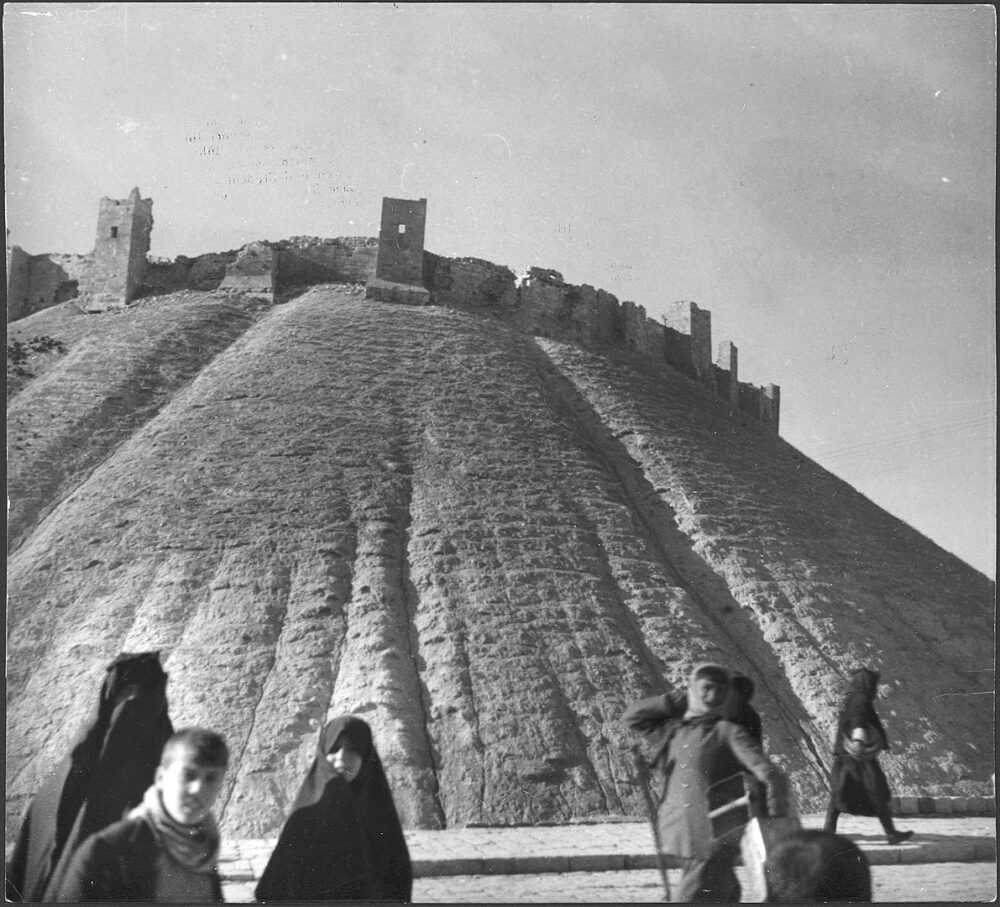
View of the Citadel of Aleppo, Christmas 1933. Photo by Annemarie Schwarzenbach. Swiss Literary Archives, Bern.
On 6 December Annemarie and Fred pitched up at the Baron Hotel in Aleppo, dowager of the old world hotels for nineteenth-century pilgrims heading south to Jerusalem. King Faisal had declared Syria’s independence from the balcony in 1918. Lawrence of Arabia slept in Room 202 and left his bar tab unpaid. Agatha Christie began Murder on the Orient Express in Room 203. Annemarie joined the traveller A-list, statesmen Mountbatten and Roosevelt, and sipped her mint tea from the same Royal Doulton china as Freya Stark, although it was more likely to have been Armenian cognac.
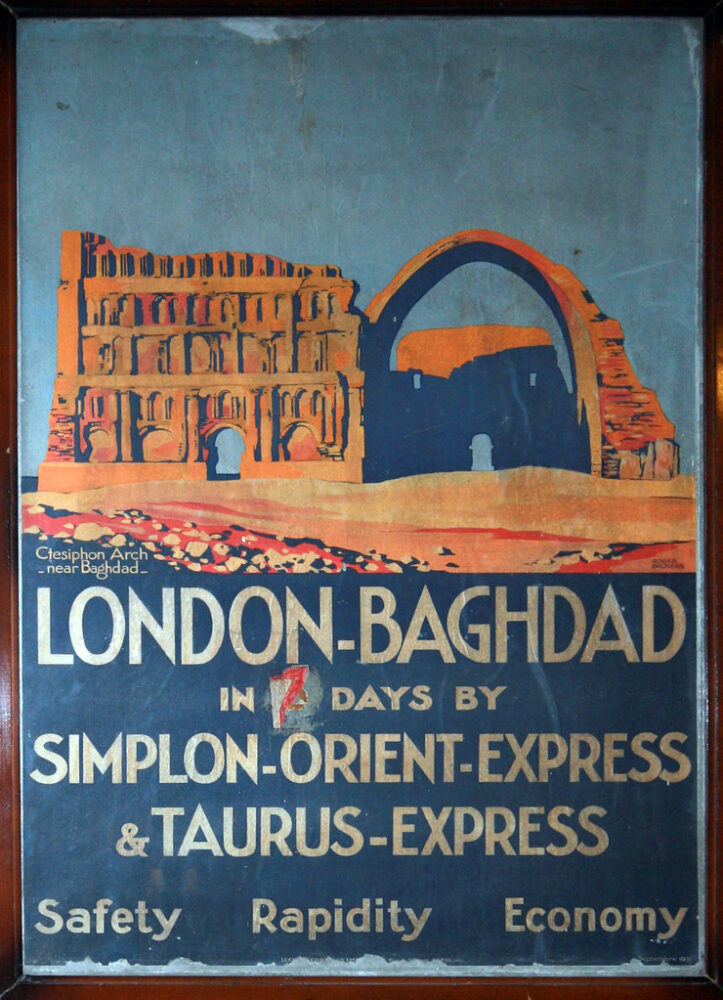
Times were…
She had arranged to spend some weeks at an archaeological dig at Reyhanli, joining the Syrian Expedition of the University of Chicago. This “hittite-assyrian” site on the Turkish border was about an hour and a half west of Aleppo and an hour east of the ancient site of Antioch in a province or sanjak of Turkey variously known as Alexandretta or Hatay (from Hittite). Today it’s the site of a large refugee population just inside the border with Syria. Whiskey seems to have been the drink of choice among the Chicago shovel-bums, and bottles of Mount Carmel wine, and raki. Hussein the driver accompanied them into Aleppo at night.
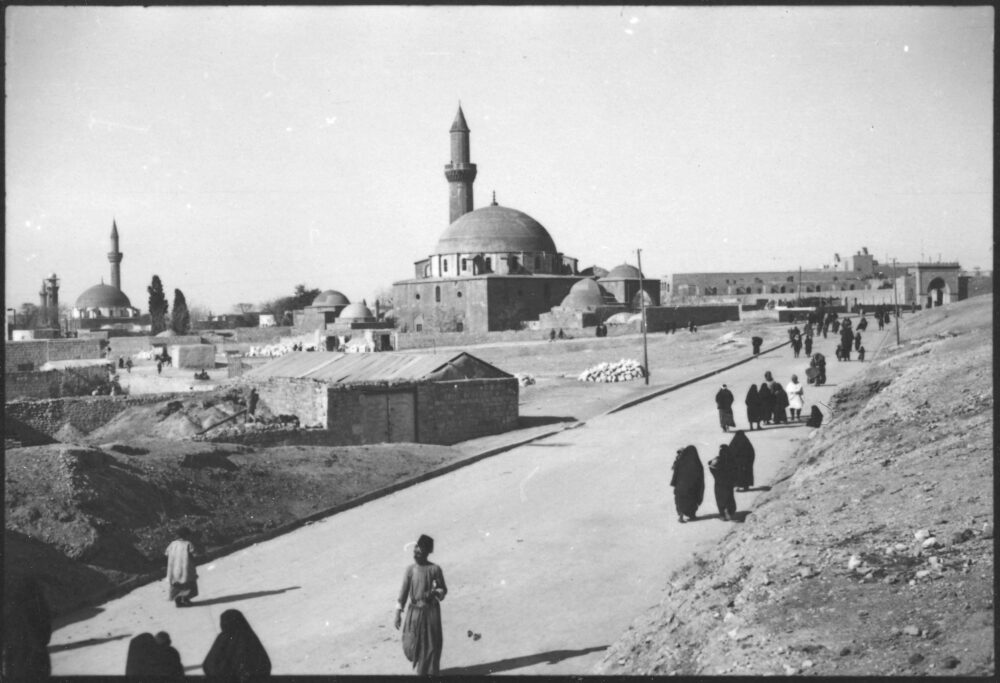
Aleppo, 1933. Photo by Annemarie Schwarzenbach. Swiss Literary Archives, Bern.
Aleppo had always been a garrison town, there were a good few French squaddies, zouaves, Foreign Legion types and sundry men on rest and recreation, and Hussein knew the soldiers’ bars under the citadel where “Negroes, Algerians in bright turbans, Arabs and French listened to the melancholy songs of singers from Istanbul and Cairo.” A 9 December letter mentions tantalisingly a visit with Jacques, Lebanese of Greek extraction, Etienne, French archaeologist, and the “correct” Fred Pasternek, to the joy division – des filles de joie – in the shadow of the Sarrasin fortress, with its falcons flying above the ruins and the town merchants crying their wares. Annemarie was in her element, a woman passing among men watching the women ply their trade.
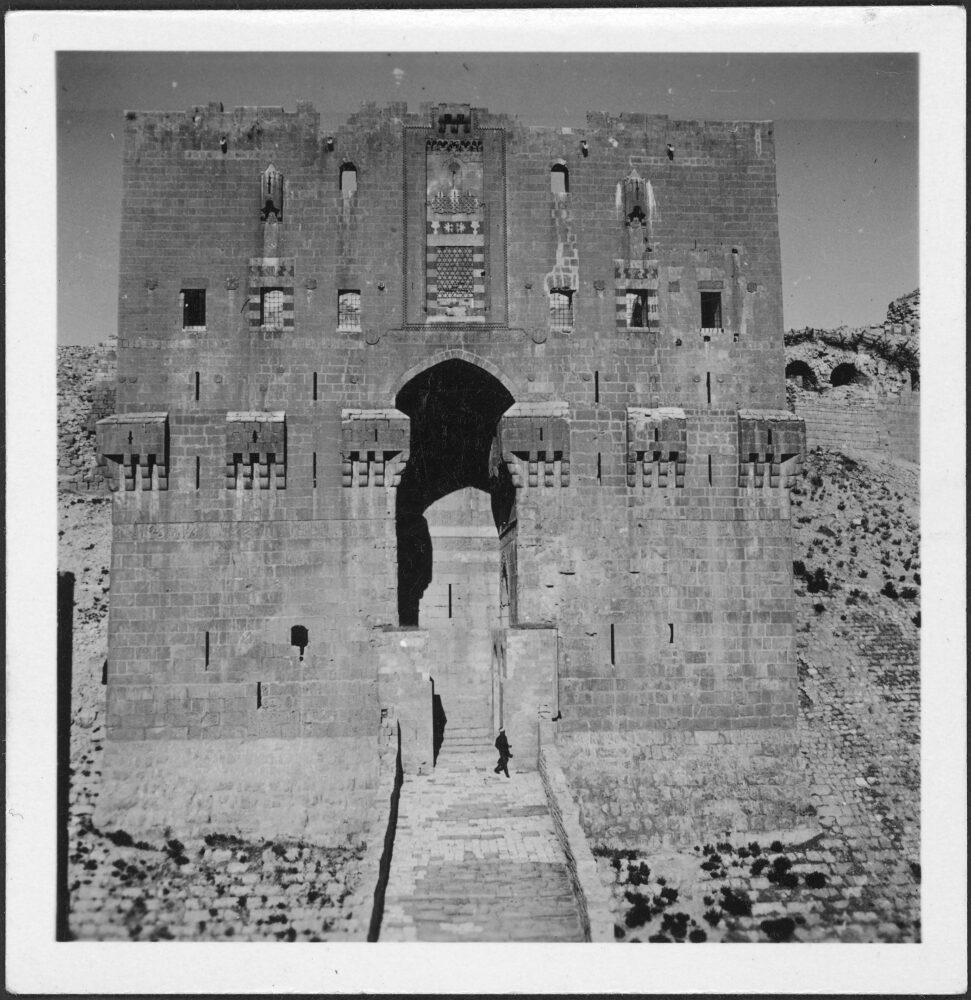
Citadel tower and entrance, Aleppo, 1933. Photo by Annemarie Schwarzenbach. Swiss Literary Archives, Bern.
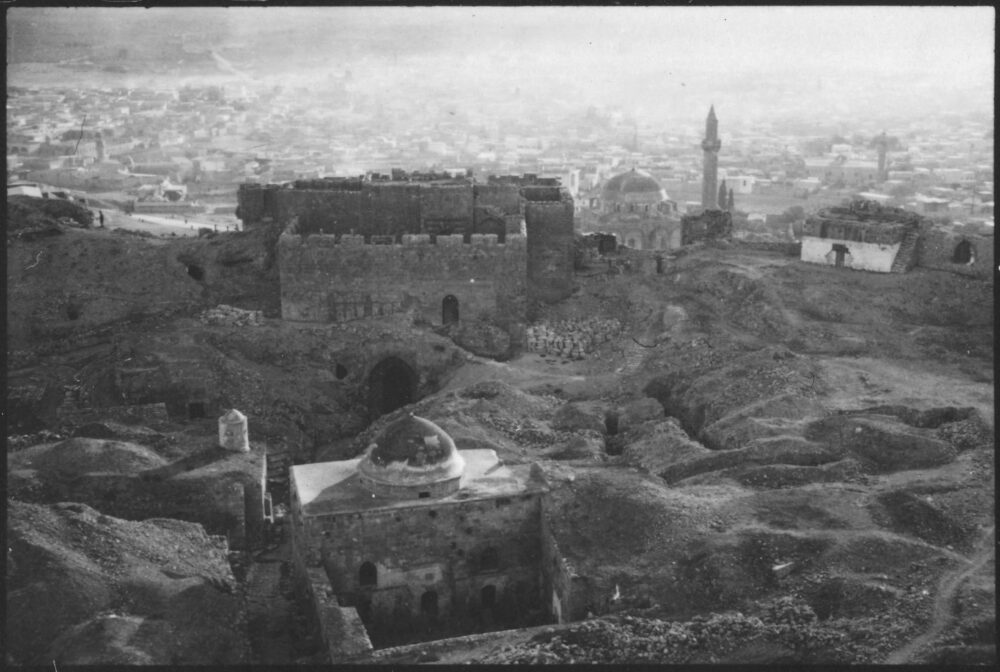
The citadel at Aleppo, Syria, 1933. Photo by Annemarie Schwarzenbach. Swiss Literary Archives, Bern.
The minaret of the mosque serves as a watchtower – and up on the parapet an African watchman under a bright turban sits motionless with his back to us, casing the city. We greet him, and he turns and invites us in Arabic to climb up, pointing over the roofs towards the setting sun: “The sea,” he says, and with a grand sweeping gesture: “Europe… Africa.”
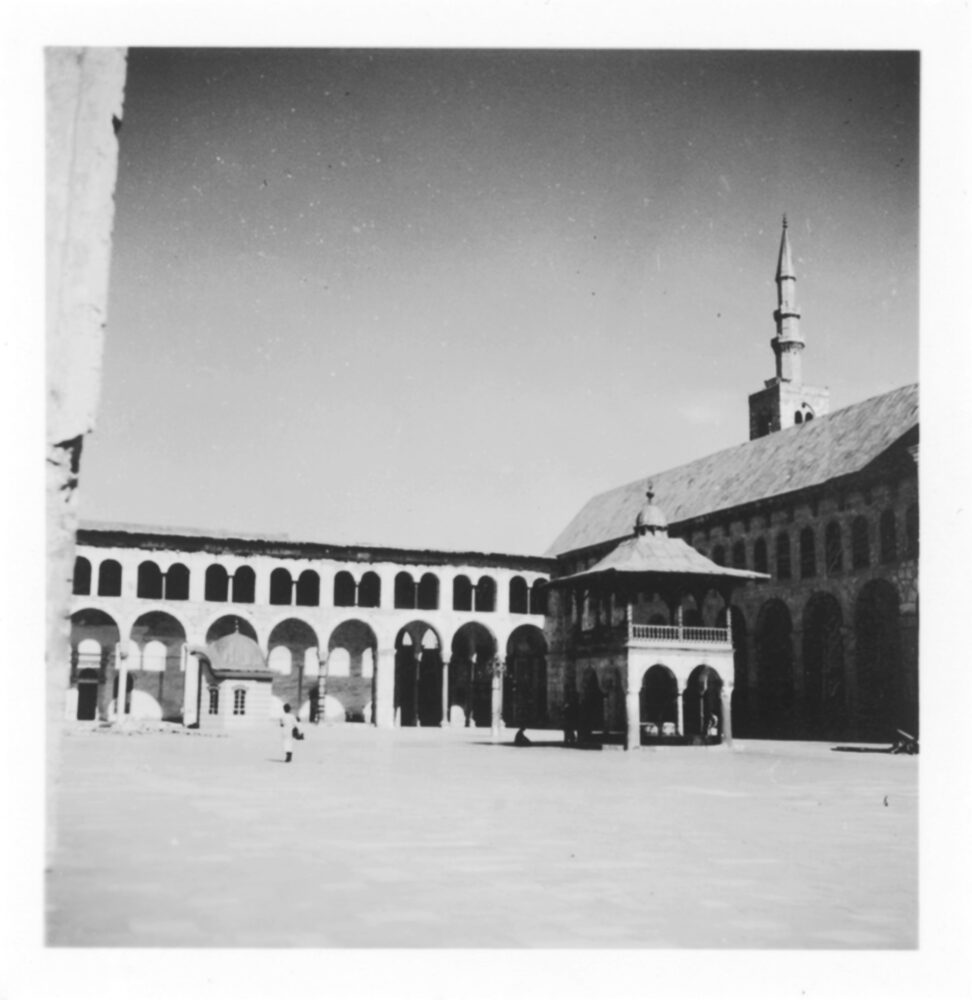
The Umayyad Mosque, a Unesco World Heritage site, 1933-34. Photo by Annemarie Schwarzenbach. Swiss Literary Archives, Bern.
The minaret of the Umayyad Mosque was reduced to rubble in fighting during the Syrian Civil War in April 2013. Rebuilding has begun. It is the first of the great historical structures of the Middle East that Annemarie witnessed before their destruction in the wars and conflicts of seventy years later – but not the last.
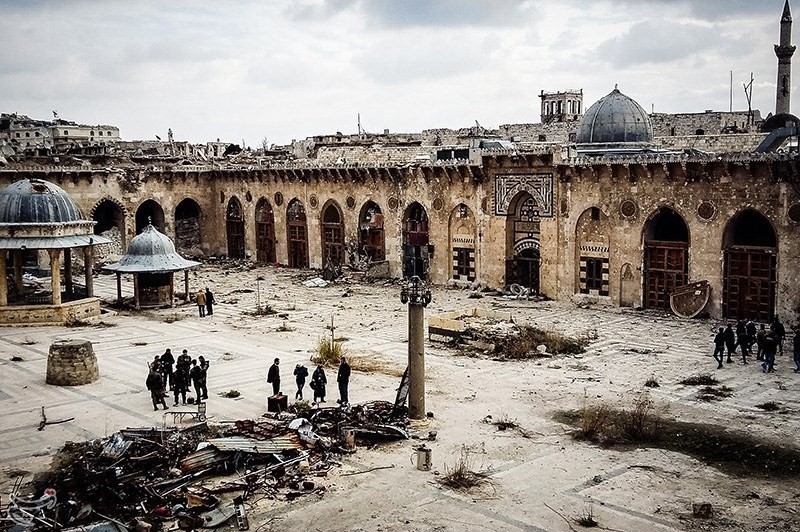
The Great Mosque of Aleppo following the siege. The Seljuk minaret was destroyed. Government and anti-government activists traded blame for the attack.
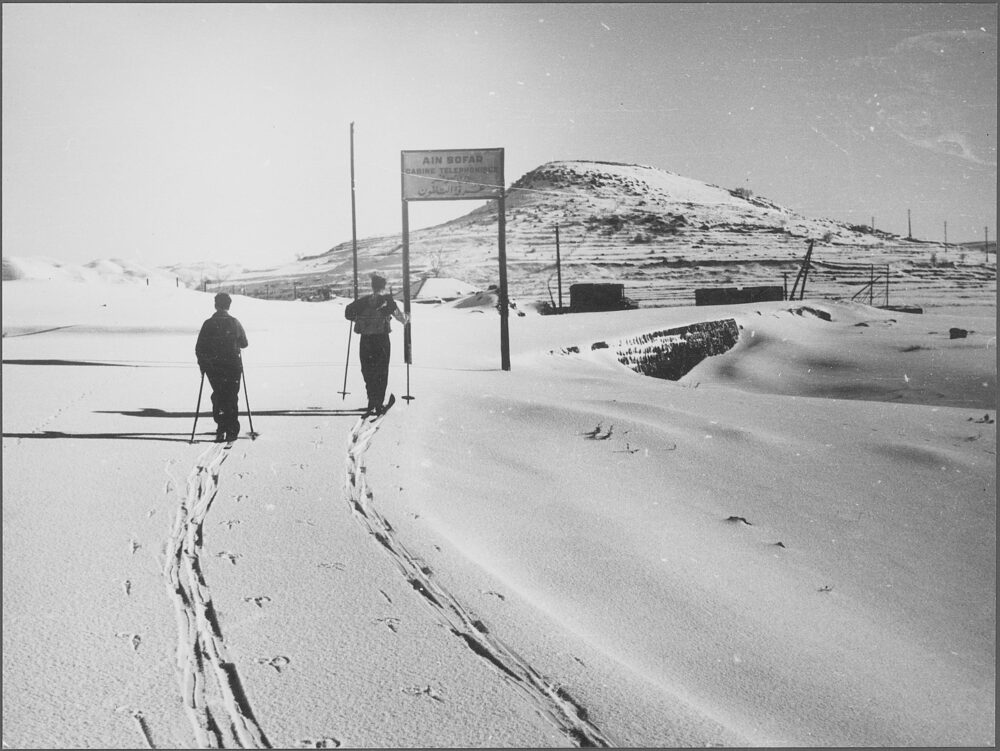
Skiing at Ain-Sofra in the Lebanon, 1934. Photo by Annemarie Schwarzenbach. Swiss Literary Archives, Bern.
Leaving Reyhanli for a three-week stay in Beirut from 6 January 1934, she took stock of her situation. She arrived armed with introductions – to the French High Commissioner, to Henri Seyric, General Director of Antiquities in Syria and Lebanon and other functionaries of the French mandate, as well as the archaeologist Harald Ingholt. The elusive Fred Pasternek returned to Berlin and Annemarie was on her own, staying at the Hotel Metropole, invited to the Résidence, and skiing at Bhamdoun on Mount Lebanon. It was the gilded life she was used to, with an oriental twist. She attended a concert by the Polish-Jewish violinist Bronislaw Hubermann, playing Brahms’ Violin Concerto, during which the musician declared he would no longer play in the “Third Reich” – as it was now termed. In 1936 he established the Palestine Symphony Orchestra, thereby recruiting a thousand Jewish musicians to what was then Palestine, who otherwise would have perished. Annemarie was glad to be among the French after three weeks rough-housing with the “cold North Americans”, whom she bad-mouthed despite availing of their hospitality. But she wasn’t alone for long. Teaming up with archaeologist Daniel Schlumberger (excavating at Palmyre), they planned to drive to Damascus to look at the whirling dervishes. As an attractive woman travelling alone, she wasn’t long without an entourage.
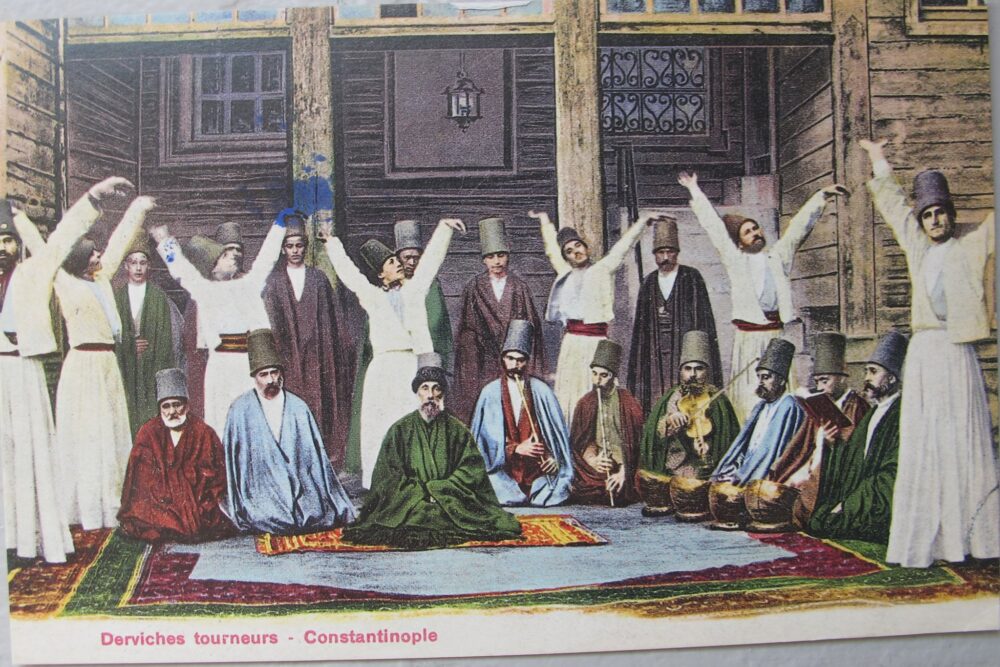
Whirling dervishes in their element, Constantinople, early 20th. c.
Beirut was a Mediterranean town of cafe terraces, umbrella pines and orange groves. It snowed, turning the mountains into the Switzerland of the Levant. She saw the old Roman bridge over the Dog River, the fierce mustachioed men in the souks, the Maronite church in the rue des Martyrs, stalls of pomegranates and artichokes, pyramids of condensed milk, barbers working in the streets, the scarlet cummerbunds, the Roxy cinema, signs in French everywhere. She took up with Mahmoud, a twenty year-old “shoeshine boy, a character, dancing attendance, and before long my friend. Handsome …” She paid a visit to his home, met his family and had tea and sugared almonds while he changed into his white embroidered pants and they went off to explore the coast road. She also found some morphine. At this point in her life she usually indulged with her friends Klaus and Erika Mann and Mopsa Sternheim, without yet being hooked. A year later she was seriously addicted, with a habit of six to eight ‘ampoules‘ a day.
There were three days of festivities celebrating Armenian Christmas and she journeyed up the coast to the Phoenecian ruins at Byblos and visited the bazaar with another small French-speaking guide. By 23 January she was ready to move on to Jerusalem and the Biblical sites further south:
Now that I’m on the point of leaving Beirut, the city seems to take on a pivotal role. Life here is easy-going and I can take the measure of some outstanding characters. I was often alone and had time to consider my projects, which at first glance seemed daunting but firmed up eventually.

On board ship, Haifa, Palestine, 1934. Photo by Annemarie Schwarzenbach. Swiss Literary Archives, Bern.
In Haifa she observed Jewish refugees arriving from Trieste in the wake of Nazi restrictions, the first of many over the coming decade, and a reminder of politics back in Germany. Among the photos Annemarie took of the port, one shows a short-haired woman shouldering a knapsack on board ship, standing opposite a ship’s officer: a look of intimacy passes between them. The refugees in the background have eyes only for the approaching promised land; the two foregrounded characters have eyes for each other. In “The Promised Land”, the first story in her collection Bei diesem Regen, the German diaspora is clear from an old professor and his young daughter:
He was called Levy, a chemistry professor at Fribourg University. He knew Palestine very well, and now he was showing his daughter where they were going to stay. She wouldn’t grow up in Germany but here in Palestine instead. How the Nazis had treated her father no more concerned her than the pogroms in Bessarabia. She would have a happy childhood in Palestine…
The flight from Damascus to Baghdad took her over the Syrian desert with its herds of gazelles and dried-up watercourses; the pilot invited her into his cockpit; the Euphrates River gleamed tantalisingly; nomad tents with their wattle defences stood out against the wilderness. This second leg of her journey, through Iraq, lasted a month, and will have to wait for a later posting.

View of Haifa from Mount Carmel, Palestine, 1934. Photo by Annemarie Schwarzenbach. Swiss Literary Archives, Bern.
Sources cited
translations by Padraig Rooney
Annemarie Schwarzenbach, “Neben dem Orient-Express”, National-Zeitung, 18 July 1939, reprinted in Orientreisen: Reportagen aus der Fremde (Berlin: edition ebersbach, 2010), p. 16.
Annemarie Schwarzenbach, Winter in Vorderasien (Basel: Lenos Verlag, 2008), p. 26.
Annemarie Schwarzenbach letter to Claude Bourdet, 1 November 1933, Annemarie Schwarzenbach: Lettres à Claude Bourdet, ed. Dominique Laure Miermont (Carouge-Genève: Éditions Zoë, 2008), p. 45.
Annemarie Schwarzenbach, “Therapia”, 3 April 1940, National-Zeitung, reprinted in Orientreisen: Reportagen aus der Fremde (Berlin: edition ebersbach, 2010), p. 31.
Annemarie Schwarzenbach, “Schrecken der orientalischen Landstrassen”, Orientreisen: Reportagen aus der Fremde (Berlin: edition ebersbach, 2010), p. 72.
Annemarie Schwarzenbach, An den äussersten Flüssen des Paradieses, ed. Roger Perret (Basel: Lenos Verlag, 2016), p. 53.

